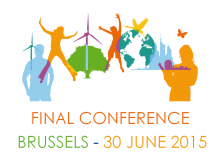This country level report is part of report series that has the objective to perform an initial ‘stock-take’ of the climate policy instrument mix at EU and Member State level. In line with the other reports of the series, this report groups the existing policies in Spain into four main categories, or policy landscapes: carbon pricing, energy efficiency, renewable energy and non-CO2 gases.
In the different chapters of the report the respective instruments of each policy landscape are described in detail and their interactions within each of the policy landscapes are identified. In a next step, the policy landscapes are evaluated using a specific definition of what constitutes optimal climate policy, which was developed in a previous CECILIA2050 report (What constitutes an optimal climate policy mix? Defining the concept of optimality, including political and legal framework conditions). In addition, the report also evaluates how the four different policy landscapes interact with each other.
Attachment:
Citation:
Funding:
Year of publication:
Number of pages:
Table of contents:
|
0 |
Executive summary |
5 |
|
1 |
Description of policy landscapes |
6 |
|
1.1 |
Classification of the instruments previously selected into policy landscapes |
6 |
|
1.2 |
Detailed description of instruments within each policy landscape |
8 |
|
1.2.1 |
Carbon Pricing |
8 |
|
1.2.2 |
Energy Efficiency and Energy Consumption |
16 |
|
1.2.3 |
Promotion of Renewable Sources of Energy |
20 |
|
1.2.4 |
Non-Carbon Dioxide GHGs |
24 |
|
1.3 |
Identification of interactions of instruments within each policy landscape |
25 |
|
1.3.1 |
Carbon Pricing |
25 |
|
1.3.2 |
Energy Efficiency and Energy Consumption |
28 |
|
1.3.3 |
Promotion of Renewable Sources of Energy |
29 |
|
1.3.4 |
Non-Carbon Dioxide Greenhouse Gases |
30 |
|
1.4 |
Description and evaluation of policy landscapes in the light of the concept of optimality developed in task 1.1 |
31 |
|
1.4.1 |
Carbon Pricing |
31 |
|
1.4.2 |
Energy Efficiency and Energy Consumption |
33 |
|
1.4.3 |
Promotion of Renewable Sources of Energy |
34 |
|
1.4.4 |
Non-Carbon Dioxide Greenhouse Gases |
36 |
|
2 |
Description and initial evaluation of the overall instrument mix |
37 |
|
2.1 |
Identification and description of the main interactions between policy landscapes |
37 |
|
2.2 |
Summary discussion of the combination of policy landscapes (the overall instrument mix) against each one of the elements of the concept of optimality |
39 |
|
3 |
Conclusions |
41 |
|
4 |
References |
43 |


